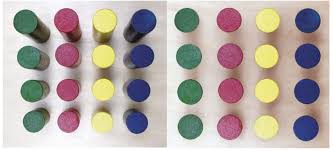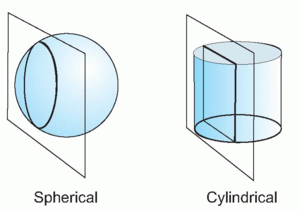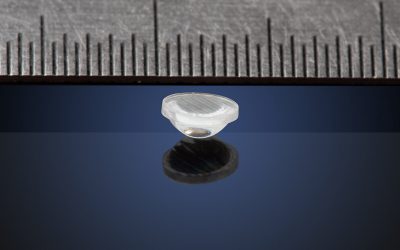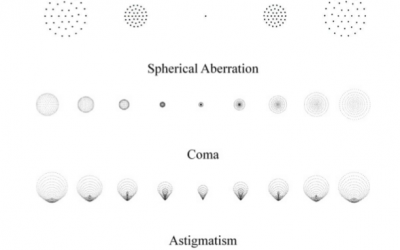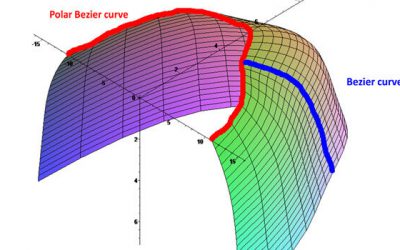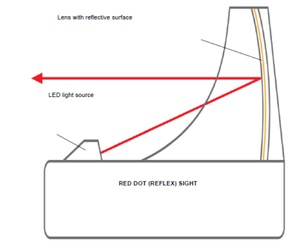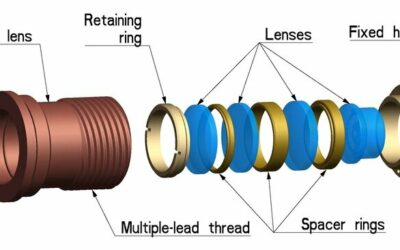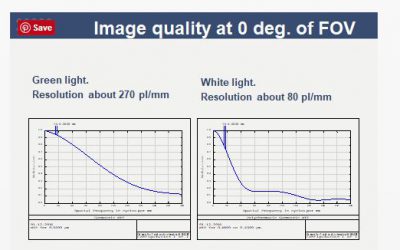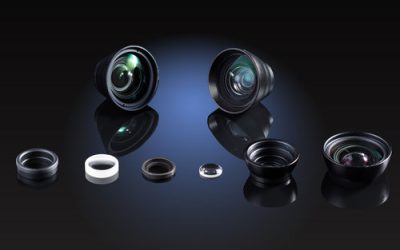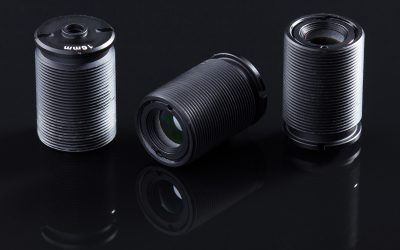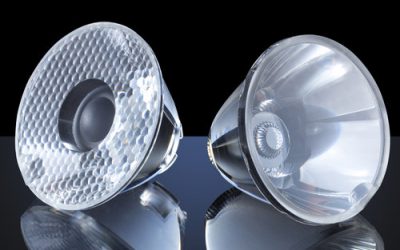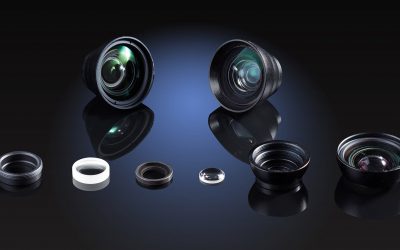Introduction to Telecentric Lenses An important goal in machine vision applications is taking measurements in a consistent, accurate, and precise manner. This can include measuring the dimensions of manufactured parts to guarantee they are within the design...
lens design
5 Applications of Cylindrical Lenses
by Victor Argueta | FAQ, lens design, optical design, optics
When thinking of a ‘lens’, most people have the image of a spherical lens in their mind, but there are different geometries for lenses, and one of the most common is the cylindrical lens. What’s the difference between spherical and geometrical lenses? And what...
Design considerations for microlenses and lensarrays
by Victor Argueta | FAQ, lens design, optical design
As optical systems are reduced in size, we encounter new engineering challenges when analyzing and designing lenses. These are issues that we usually don’t see when working with larger elements. This article will review some of the challenges when designing...
Mastering Spot Diagrams: Analyzing Optical System Quality | OFH
by Victor Argueta | FAQ, lens design, optical engineering, optics definitions
Introduction to Spot Diagrams As optical engineers, we use different tools and techniques to evaluate the performance of an optical design when simulating the system in a ray tracing program. One of those tools are spot diagrams. They may be a little bit confusing to...
How Aspheric and Freeform lenses work
by Victor Argueta | lens design, OFH, optical design, Zemax
A key aspect of an optical product development is the creation of a quality optical system design optimized to reduce aberrations and system cost. In an attempt to reach a balance between cost and performance, optical designers have created lenses with different...
Benefits of Zemax’s Black Box Lenses
by Victor Argueta | lens design, optical design
When integrating off the shelf lenses into optical systems, it is essential to have full information about how a lens will perform with other elements in the system. When multiple component vendors ( ie electronics, mechanical, optical) are involved, data...
Scanning and Fluorescent Microscope Design Steps
by Victor Argueta | lens design, optical design, optical engineering
Microscopy is a fundamental technique used to analyze samples that are too small to be perceived without magnification. It is used in multiple sciences, from biology, medicine, chemistry to anthropology, and any science where small samples are...
Types of Optical Designs used for Rifle Scopes
by Victor Argueta | lens design, optical design, optics
Autumn is almost here and with that, hunting season. Hunting is so popular in my state that it is a non-official holiday where school is “canceled” and congress gets the day off. I’m not sure if that happens elsewhere but it is fair to say that hunting is a big part...
Achromatic doublet design and optimization
by Victor Argueta | lens design, optical design
Basic Concepts One of the most common optical structures is the achromatic doublet. It is used to reduce chromatic aberrations. At its most basic, it is a two lens system configuration where one lens is a concave lens, usually made of a flint glass, and the other is...
Understanding Opto-Mechanical Design: Examples and Definitions
by John | lens design, opto-mechanical design
Opto mechanical design overview and definitions In an opto-mechanical design we work on the positioning of optical elements such as lenses, filters, beamsplitters, reflectors, and diffractive elements in mechanical structures that will allow the optical...
What are a ‘typical’ steps in lens design ?
by John | lens design, optical design
Overview OFH works on many different types of projects, each with its unique goals and deliverables. For illustration, here is a breakdown of a lens design project from 2012. Our client produced a very low cost diagnostic microscope to view saliva with 30x...
Can your lens vendor test your lens?
by John | lens design
Selecting the right lens manufacturing vendor is a multi step process. To start, you will need detailed production drawings to ensure the vendor understands what you require and the tolerances involved.. As you get quotes, you may find qualified suppliers with good...
How much does a custom lens cost?
by John | lens design, optical design
Updated June 2020. A straightforward question, with no direct answer. The price of lenses depends on the design complexity, material, manufacturing process, and production series size. A mass-produced lens, made from injection-molded plastic at volume 500,000 units,...
An Overview of Wide-Angle Lens Projections
by VasiliKarneichyk | lens design, optical design
There are two primary methods of image formation in lens design. Perspective projection (F-Tan Theta lenses also called Rectilinear or Orthoscopic). Equidistant projection (F-Theta lenses also called Equiangular) The Perspective projection method is most often used...
5 best materials for LED illumination optics
by AnatoliTrafimuk | illumination, lens design
Updated July 2020. Freeform lenses (including TIR lenses) and lightpipes are the two most common types of LED illumination optics. They can be made using injection molding and are affordable. Glass materials are not common for general illumination, but are used for...
Difficulty of optical requirements for roadway lighting, ranked
by AnatoliTrafimuk | lens design, optical design
All roadway lamps must be designed according to specific standards. The most popular ones are a US standard called "IESNA RP 8-00 Roadway lightning" and a European one called "CIE 140-2000 Road lighting calculations". In the case of CIE 140-2000, the standard only...
Infrared and thermal optics material selection
by SergeySidorovich | lens design, optical engineering
The selection of optical materials is a critical step in the design of infrared optics. Traditional optical materials (optical glasses and plastics) used in the design of visible radiation optics aren’t suitable due to their high light absorption coefficient in the...
Designing a custom macro lens for smartphone
by OlegRybakovsky | lens design
As discussed in this post, the design of lens attachments for cell phone cameras presents particular challenges to optical and optomechanical engineers. One common market goal is to decrease the minimum focus distance of a smartphone. In this post, we will discuss key...
Infrared and thermal imaging design
by VasiliKarneichyk | lens design
In the coming weeks, we will be posting about the unique design considerations and material requirements for infrared optical systems. In this post, we will focus on the definitions optical engineers use. Infrared radiation includes electromagnetic waves with...
Lens attachments for smartphone cameras
by OlegRybakovsky | lens design, optical design
In the past several years, smartphone cameras have taken a big step forward. The image quality of the best iPhone, Samsung, and HTC cameras is equivalent to low-priced Canon, Nikon, Pentax, and Sony DSLR cameras. Many prefer taking photos with smartphones due to...
